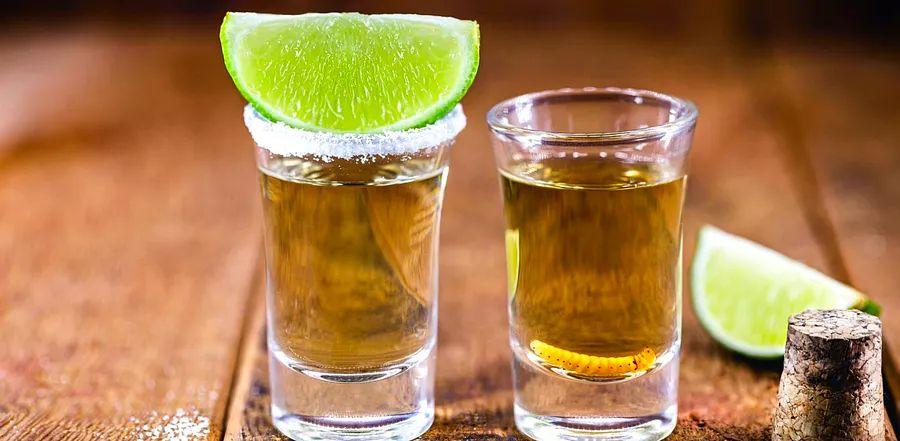Mezcal vs. Tequila: Understanding the Difference

In the past, if you were craving an agave-based drink at a bar or restaurant, tequila was pretty much your only choice (and who doesn’t enjoy a classic margarita?). Today, however, not only is tequila available in a variety of options, but mezcal is also gaining popularity, whether you're familiar with it or not.
You’ve probably heard the saying: All tequila is mezcal, but not all mezcal is tequila. While this is a useful concept to remember once you're acquainted with both, it might seem like nonsense at first.
Let’s take a deeper look at these two spirits and explore what makes them both alike and distinct.
Mezcal vs. Tequila
Mezcal and tequila are both agave-based spirits with rich Mexican roots, making them easy to mix up.
Any spirit made from agave is technically mezcal, as the term 'mezcal' refers to agave-based distillates. Think of it like how bourbon is a type of whiskey, pinot noir is a type of wine, and tequila is a subset of mezcal.
While tequila may seem like the original, given its widespread commercial success, mezcal actually has ancient origins, stretching back thousands of years. Tequila, on the other hand, is a modern commercial product, whereas mezcal remains largely artisanal and smaller-scale.
A key difference is that mezcal can be crafted from any variety of agave, while tequila must be made exclusively from blue Weber agave. Additionally, tequila is only produced in five specific regions in Mexico. However, both spirits share a common success in cocktails, adding layers of complexity and flavor.

What Exactly Is Mezcal?
As mezcal becomes more accessible, bartenders are experimenting with its unique characteristics to create amazing cocktails. Traditionally, however, it's served neat. (If you enjoy scotch—especially peated varieties—give mezcal a try neat. You'll thank us later.)
The biggest difference in flavor between mezcal and tequila is mezcal’s distinct smokiness. This can range from a light hint to an intense punch, depending on the brand, and is part of the fun of mixing it into drinks. Different mezcals will bring out different qualities in your cocktails. All in all, mezcal is a bold spirit that knows how to make a statement. Expect flavors of earth, citrus, and occasionally tropical notes, with some mezcals taking on a bitter edge.
Agave Used in Mezcal
As mentioned earlier, mezcal stands out because it can be made from any of over 30 different types of agave. Most commonly, it's crafted in Oaxaca, but it also comes from other Mexican states such as Michoacan, San Luis, Zacatecas, Guerrero, and Chihuahua. Just like wine, where the region of production influences its taste, mezcal's origin imparts a unique flavor profile.
Mezcal holds significant cultural importance in Mexico and its flavor varies widely from one town to another, further cementing its status as a deeply personal and unique spirit.
The Agave Angustifolia, also known as Espadín, is the most commonly used plant for mezcal and takes about 6–8 years to mature. This variety is packed with sugars and creates a mezcal that is both herbaceous and fruity.
Marmorata (or Pichumel/Tepeztate) agave is another favorite for mezcal production, but it requires a long 35 years to mature. As a result, mezcals made from this plant tend to be pricier and have a spicier, more intense flavor.
The small Potatorum (or Papolome/Tobalá) agave is known for its sweet profile and often comes with a higher price tag due to its rare and delicate nature.

Types of Mezcal
Understanding the different types of mezcal can be trickier than tequila. With tequila, the distinctions are clear-cut, but mezcal classification takes into account both the age and the specific type of agave used in production. There are also variations in distillation methods that can lead to different classifications. Most producers focus more on the type of agave than the aging process, as the agave has a more significant impact on flavor.
- Joven or Blanco: unaged and no color
- Madurado en Vidrio: means “matured in glass," so (unsurprisingly) it is aged in glass for at least one year. This will happen in a light-free, temperature-controlled place, or simply underground.
- Reposado: aged in any type of wood for 2–12 months.
- Anejo: aged in any type of wood for a minimum of one year.
What Is Tequila?
While mezcal is incredibly versatile, tequila is much more regulated. The Mexican government mandates that only blue Weber agave can be used to make tequila, and the production is mostly limited to the state of Jalisco, with very few exceptions. The process for making tequila is also far more standardized.
Tequila can be mass-produced, which explains why it's been so widely available in bars (until recently, that is). Its accessibility, combined with its broad range of flavor profiles, makes it perfect for crafting a variety of cocktails. Tequila can have earthy, fruity, vegetal, herbal, or citrusy notes, and may even carry a subtle smokiness. Common flavors include grass and yam, while aged tequilas can develop dessert-like qualities such as vanilla, cinnamon, or caramel, making them ideal for sipping neat.
Agave Used in Tequila
Though only blue Weber agave is permitted in tequila production, there are two main types: pure and mixto. Pure tequila is made entirely from 100 percent blue Weber agave, while mixto combines agave with sugars from other sources. It's best to steer clear of mixto—always check the label to ensure it's 100 percent agave. If not, you're likely dealing with a blend of fermented sugars and artificial additives, including colorants.
Types of Tequila
Tequila can range from unaged to heavily aged. As with many spirits, the longer it matures, the darker it becomes and the more its flavor evolves.
- Blanco: AKA clear, sometimes called silver or white. This tequila is aged for less than two months (if it is at all), likely in stainless steel but possibly in oak tanks. Blanco tequila is required to be bottled within 60 days. Known as "light, bright, and juicy," this variety is very fresh, the most vegetal, and a bit spicy from a lack of age to mellow it. Something good to remember is that when a spirit is left unaged, it expresses itself naturally, fully tasting the ingredients. (Aging allows it to take on additional flavors brought on by the container it’s aged in.)
- Joven: also called gold, this tequila is a blend of white and aged or blanco plus additives (we’d pass, but you do you).
- Reposado: A rested tequila, creating a more complex flavor profile with rounded edges. The minimum aging time is two months, and it must take place in oak casks. Its deeper body makes it incredibly desirable to drink straight or add to a cocktail.
- Anejo: Its noticeably dark color comes from a minimum aging of one year in oak. Rich, nuanced, and lovely, this tequila is the most likely to be enjoyed neat and the most enticing for whiskey drinkers.
- Extra Anejo: The oldest and the darkest. Extra Anejo must be aged for a minimum of three years in oak and is known for its notes of intense vanilla and baking spices.

How Are Mezcal and Tequila Made?
Both mezcal and tequila are made from the piña, or heart, of the agave plant, which is revealed once the sharp leaves are removed. The piña is then cooked, crushed, and its juice fermented and distilled. The cooking method of the piña is what sets tequila apart from mezcal. Mezcal, with its deep Mexican heritage, follows a traditional cooking method, often in an underground stone pit with charcoal, and is covered for several days. This process imparts the distinctive smokiness that mezcal is known for.
The traditional, age-old process of making mezcal is one of the reasons why the spirit is produced in small batches.
Mezcal prides itself on full transparency in labeling, sharing details such as the village of production, the region where the agave was cultivated, the roasting method, and even the type of still used. Mezcal makers take great pride in their craft, unlike tequila producers who often keep their methods under wraps.
Tequila can be cooked in various ways, but the best-quality agave is baked in a brick oven. Some producers use steam heat and pressure for faster cooking, while others resort to chemical methods to extract the juice, which often results in a less desirable flavor. While you don't need to splurge, opting for a bottle priced slightly higher than the cheapest options will deliver a much better tasting experience.

1

2

3

4

5
Evaluation :
5/5